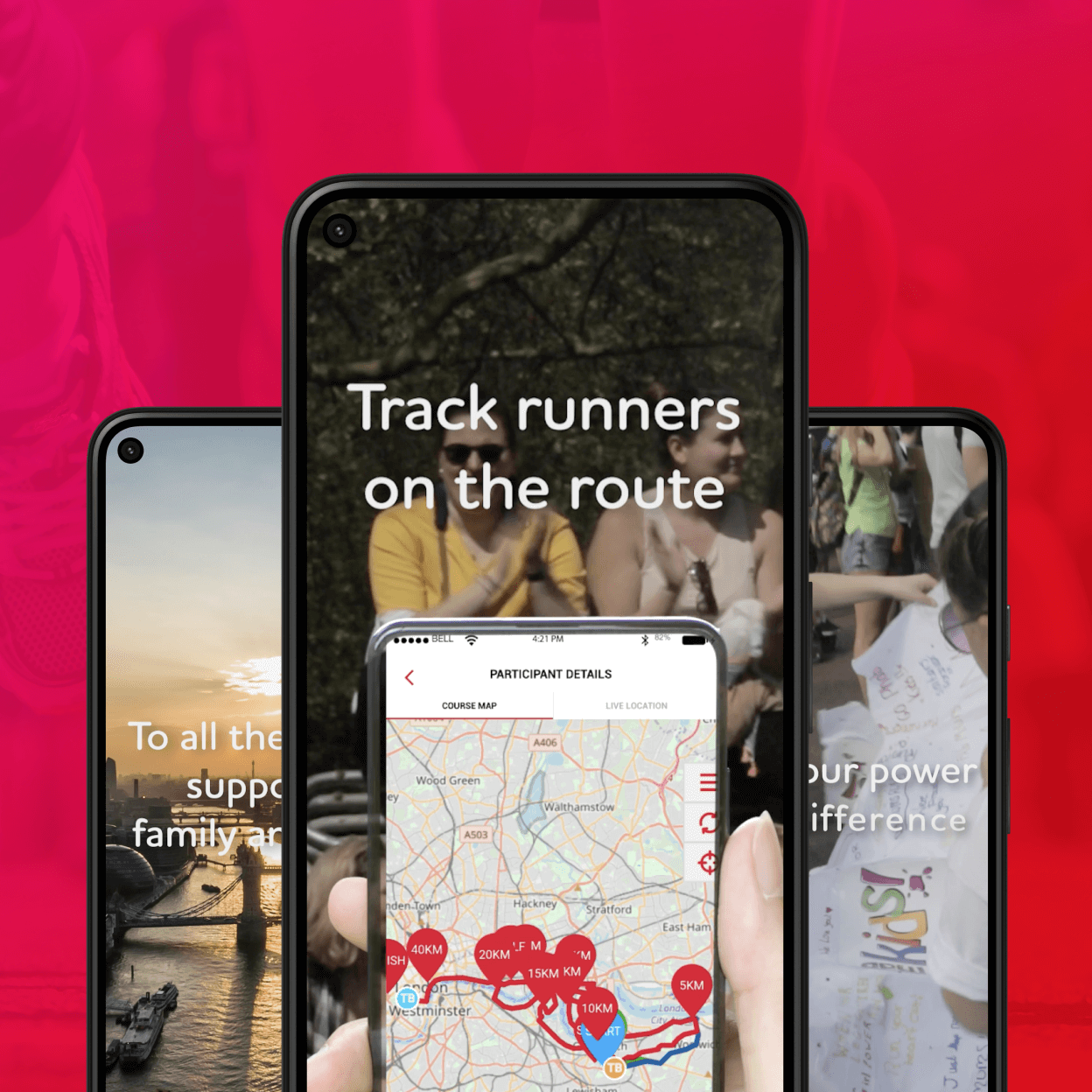Business isn’t always about big deals, slamming the phone down and ringing a big red bell, whilst four elephants and a marching band parade around your trillion-dollar office.
Much of the time, business is about incremental gains. Small wins that all add up. As my grandma used to say, “Focus on the pennies and the pounds take care of themselves.” And it’s true, if you focus on the pennies, i.e. get the little things right, then the pounds, those big deals (maybe minus the elephants) will fall into place.
The world of tech is fiercely competitive. Being able to poke your head above the crowd, in order to be heard, is easier said than done. Customer experience and expectations are sky high and rising. You need a well-rounded set of brand values that speak to people, that align with your customer’s values too. And this where your brand identity comes in.

Why is brand identity important?
Competition is particularly high among Microsoft Partners. With a more limited spread of products, differentiating from your opposition is a challenge. Having a strong brand identity will help you stand out in a crowded marketplace. It will help you build trust and credibility with your customers.
In order to stand out, you need to look beyond your product. When a customer buys from you, they aren’t simply exchanging money for a commodity, they’re choosing your brand, what you stand for. Who you are.
How to improve your brand identity
Here are some moves you can make to improve your brand identity and get heard above the noise.
1. Embrace CSR Initiatives
Corporate social responsibility (CSR) incentivises using your organisation’s power for good. Litter picking, donating tech to local schools and colleges, and fostering a more inclusive working environment for people from all backgrounds: it’s all part of your CSR approach. This, in turn, can help to improve your brand identity and make your business more attractive to customers. Remember, 77% of consumers are more likely to use your company if you are committed to building a more sustainable and inclusive world. 73% of investors also state that efforts to improve the environment and society impact their decisions.
Real-life example: Salesforce, the tech giant, has a dedicated philanthropy model known as the "1-1-1 model." They commit 1% of their equity, 1% of their employee's time, and 1% of their product to give back to the community.
![]()
How to start CSR initiatives
For smaller companies looking to achieve something similar, here are 10 bullet steps to start such an initiative:
- Assess your company's values and mission – Almost all organisations value community, integrity and equity. Now’s your chance to turn your values into actions.
- Identify causes that align with your business – Perhaps you specialise in setting up software for schools. Maybe you develop infrastructure for charities. Or you may provide IT support for a recycling agency.
- Set clear CSR goals – What do you want to achieve through these initiatives? Set out an achievable and measurable goal. E.g. Raise £10,000 for charity.
- Engage employees in the decision-making process – Employees may already volunteer or be part of social action groups. They will also have plenty of suggestions on how you can help to create a better workplace environment and planet.
- Allocate resources (time, money, or products) – Change doesn’t happen by itself. It takes work and resource to make things happen. Decide how much you want to invest in your initiatives, and how you can carry them out effectively.
- Form partnerships with relevant non-profits or organisations – Speak with charities and non-profits, maybe you work with some, and discuss how you can help support their mission.
- Encourage employee volunteerism – Give employees volunteering days and incentivise volunteering to help further your initiatives.
- Incorporate CSR initiatives into your marketing strategy – Let the world know how you’re helping to make positive change.
- Regularly evaluate and report on CSR progress – Are your approaches effective? Are you making a difference? Would your efforts be better spent somewhere else? Are there social groups that particularly need your help right now?
- Celebrate and share your CSR successes – Thank your employees, your collaborators, your partners. And celebrate your accomplishments! It’s good to do good. Build a culture that encourages CSR development and before long it will begin to grow organically.
Need help with your CSR marketing? We can help.
2. Offer Tailored How-To Tutorials
Knowledge is power and sharing it with your clients can forge unbreakable bonds. Go beyond basic instructions and create personalised how-to tutorials that address the unique needs of your audience. Become their go-to expert. A trusted guide through the Microsoft universe.
With Simplilearn and other YouTube channels already delivering their own MST tutorial videos, why should you compete? Because you can make it personal. You know your prospective customers inside and out. They’re not just looking for a video of how to use Microsoft tools, but why you need Microsoft tools and how it can impact your business.
Example 1: If you work with clients in the pharmaceutical industry, develop a series of video tutorials illustrating how Microsoft Power BI can revolutionise data analysis in drug development.
Example 2: For clients in the finance industry, create a set of guides on leveraging Microsoft Teams for secure, efficient collaboration and communication across departments.
Topic ideas for Microsoft Teams tutorial
Here are a few tutorial ideas to get the ball rolling:
- Introduction to Microsoft Teams for Finance: Begin with an overview of Microsoft Teams, focusing on its benefits and features, tailored to the finance industry.
Tip: Make sure to explain how Microsoft Teams is designed to streamline collaboration and communication for finance professionals. - Enhanced Security and Compliance: Explain how Microsoft Teams provides enterprise-level security and compliance features to protect sensitive financial data.
Tip: Describe the various security measures, such as data encryption, multi-factor authentication, and compliance with industry regulations like GDPR and HIPAA. - Private Channels: Describe the use of private channels to create secure spaces for communication within specific departments or projects.
Tip: Provide examples of when finance professionals might use private channels, such as discussing confidential financial reports or collaborating on sensitive projects. - File Sharing and Collaboration: Explain how Microsoft Teams integrates with other Microsoft 365 tools, such as Excel and SharePoint, to enable seamless file sharing and collaboration.
Tip: Give examples of financial tasks that can be simplified by collaborating in real-time, such as working on budgets or financial forecasts. - Customisation with Apps and Bots: Describe how Microsoft Teams can be customised with finance-specific apps and bots to streamline workflows.
Tip: Provide examples of finance-related apps and bots, such as expense tracking or financial news updates, that can be integrated into Microsoft Teams.
3. Host Podcasts and Webinars

Establish credibility and trust by hosting webinars and podcasts that delve into the latest trends, insights, and the Microsoft partner experience. Be a guiding light in the maze of technical jargon.
OK, there’s a lot of Microsoft podcasts out there. From ‘The Intrazone by Microsoft’ to ‘Microsoft Mechanics’ and more, it’s a crowded market. But the Microsoft partner perspective is a path less travelled. Drill down a little further into your niche and you might even find an area of expertise that hasn’t been covered by others. That’s what you’re looking for.
Then there’s webinars. At Fifty Five and Five, we launched our own first webinar recently. Not only was it enormous fun to make, but it gave our senior team a platform to talk about B2B marketing’s hot topics. It allowed our clients to put faces to names and get inside the heads of some of our agency’s leaders.
More than anything though, it provided them with something of value. Something that our clients can use in their marketing efforts. If you can give your customers something of value, for free, you’re much more likely to earn their loyalty.
Example: Microsoft partners can educate clients about Microsoft products and their benefits. For instance, host a podcast or webinar series about maximising productivity and collaboration with Microsoft 365.
Remember, to get people through those virtual doors, you need a killer title that both hooks them in, and gives a hint as to what they’ll learn:
The Microsoft 365 Time-Bending Chronicles: Unleash Your Productivity Superpowers with these Smart Tools"
"Office Wizardry Unleashed: Conjuring Collaboration and Efficiency with Microsoft 365"
"Mission: 365 - The Secret Agents of Productivity and Teamwork in the Microsoft Universe
4. Sponsor Events
Boost your brand visibility and flaunt your know-how by sponsoring events that resonate with your target audience. Consider tech conferences, industry seminars, or even setting up your own partner event.

We work closely with our client, TCS, the title sponsors of the London Marathon. While you may not be sponsoring the marathon (for now), you can still seize the initiative to find Microsoft partner or technology network events and become a co-sponsor. So, why not team up with like-minded organisations to build your own partner event? Bring your network together and find a topic worth sharing.
Example 1: Co-sponsoring an annual summit for Microsoft partners in the financial services sector. Host a panel discussion on leveraging Microsoft Azure for enhanced security and compliance. Engage in some of the other discussions, and remember to mingle during the networking time!
Example 2: Host a roundtable event during Microsoft Ignite. Microsoft Ignite offers a unique opportunity to learn from the experts, connect with peers, and discover new ways to innovate with Microsoft technologies. According to Microsoft, more than 23,000 people attended the inaugural Microsoft Ignite conference in 2015. The event has grown ever since.
Here's our work with TCS - title sponsors of the London Marathon.
How to plan a roundtable event
Here are 10 things to remember when planning a roundtable event:
- Define your objectives: Clearly outline the purpose and goals of your roundtable event, and use these to guide all subsequent planning decisions.
- Select a theme or topic: Choose a relevant and engaging theme or topic for discussion that will pique the interest of your target audience and spark meaningful conversation.
- Identify and invite the right participants: Curate a diverse group of participants with varied expertise, backgrounds, and perspectives to ensure a rich and dynamic discussion.
- Choose a skilled moderator: A skilled moderator is essential for facilitating conversation, keeping the discussion on track, and ensuring all participants have an opportunity to contribute.
- Prepare a detailed agenda: Create a comprehensive agenda that outlines the event's structure, discussion topics, and time allocations, and distribute it to participants in advance.
- Select an appropriate venue: Pick a comfortable, accessible, and well-equipped venue that suits the size and nature of your roundtable event.
- Promote the event: Use a variety of marketing channels, such as social media, email, and industry forums, to publicise your roundtable event and attract your target audience.
- Prepare supporting materials: Develop any necessary materials to support the discussion, such as handouts, slides, or multimedia resources.
- Ensure smooth logistics: Coordinate all logistical aspects of the event, including catering, AV equipment, registration, and any necessary accommodations for participants.
- Follow up with participants: After the event, follow up with participants to gather feedback, thank them for their attendance, and share any relevant resources or outcomes from the discussion.
Crafting the perfect strategy for TCS
Whether it's crafting captivating content for your how-to tutorials or organising and promoting your webinars, we do it all.
This is why TCS trusted us to bring their brand message to life. See how we developed a winning strategy and delivered inspiration and heart to the participants and viewers of the marathon.

